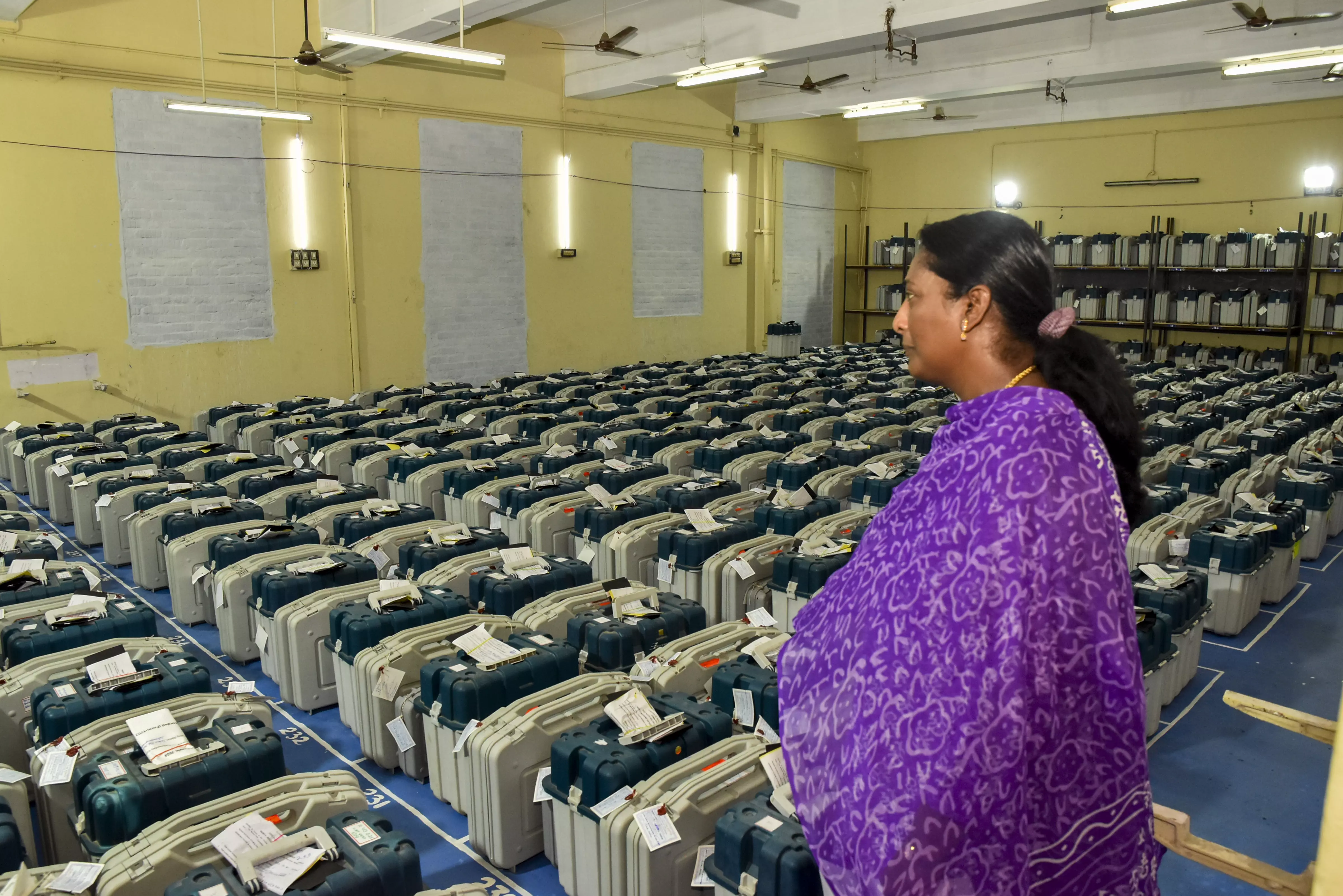
Explained: 5 EVM-VVPAT doubts SC wants Election Commission to clarify
SC bench orders EC to answer five questions including whether the microcontroller were installed in the controlling unit or the VVPAT

The Supreme Court, which is weighing in the efficiency of VVPAT machines in cross-verification of votes cast of EVMs, on Wednesday (April 24) asked the Election Commission to provide clarification on at least five aspects regarding the functioning of EVMs.
A bench of Justices Sanjiv Khanna and Dipankar Datta, which has reserved its verdict on a batch of pleas seeking complete cross-verification of votes cast using EVMs with Voter Verifiable Paper Audit Trail (VVPAT), said it needs clarification on certain aspects as there was some confusion in answers given by the Election Commission (EC) in its 'frequently asked questions' (FAQs) on EVMs.
The clarifications pertain to storage of EVMs, and microchip in the controlling unit of EVMs among others.
“We went through the FAQs. We just wanted three-four clarifications. We don’t want to be factually wrong but doubly sure in our findings and hence we thought of seeking the clarification," the bench told Additional Solicitor General Aishwarya Bhati who was appearing for the EC.
The top court also asked Bhati to call senior Deputy Election Commissioner Nitesh Kumar Vyas at 2 PM. Vyas had earlier given a presentation to the court on the functioning of the EVMs.
Here are the five doubts the apex court wants clarified:
‘Where is microcontroller installed?’
The bench said it needs to know how the microcontroller in the EVM works and whether it is installed in the controlling unit or in the VVPAT.
“First clarification needed is with regard to microcontroller. Whether it is installed in controlling unit or in the VVPAT. We were under the impression that the microcontroller is the memory installed in the control unit (CU). One of the questions in the FAQs indicates that it is also installed in the VVPAT," the bench said.
The bench said that the court was informed that VVPAT has a flash memory.
‘Is it a one-time programmable microcontroller?’
The second question the court asked was whether the microcontrollers used are one-time programmable.
“The second thing which we wanted to know is whether the microcontroller is one-time programmable. It is because there are different types of microcontrollers. It is a stand taken by the EC that the microcontroller is one-time programmable. Just confirm that,” the bench told Bhati.
‘How many symbol loading units does EC have?’
Justice Khanna said the bench wants to know how many symbol loading units the EC has.
“We want to know how many are available with you (EC)," the bench said.
‘Is limitation period confined to 30 days or 45 days?’
The fourth clarification that the court wanted pertained to the storage of EVMs for 45 days.
The bench said that it was told that the limitation period for filing of election petition is 30 days and hence the EVMs are stored for 45 days.
“When we checked section 81 of the Representation of People Act, we found that the limitation period for filing of EVMs is 45 days. So please confirm us because it is 30 days or 45 days storage. If the limitation period is 45 days, then the corresponding period for storage needs to be enhanced," Justice Khanna told senior advocate Maninder Singh, appearing for the EC.
‘How are EVMs sealed, secured?’
The bench said the last point on which it needs clarification is on storage and securing of EVMs.
“When we talk of sealing and securing of EVMs, we take both the control unit and VVPAT bear the seals and are not restricted to the control unit. Somewhere you use the word control units and somewhere you use EVMs. We take it, EVMs consist of three parts–ballot unit, the control unit and the VVPAT. All three units should be sealed together. We need clarification on this aspect," the bench told the poll panel.
Court rejects request to disclose source code
Senior advocate Santosh Paul, appearing for one of the petitioners, said that source code of EVMs should also be disclosed for transparency.
The bench said, "No, the source code cannot be disclosed as there is a chance of it to be misused."
The VVPAT is an independent vote verification system which enables electors to see whether their votes have been cast correctly.
What SC said in past hearings?
On April 18, the top court reserved its verdict on the batch of pleas.
Underscoring the importance of voter satisfaction and trust in the electoral system, the top court had during the hearing told petitioners, who sought its direction to go back to using ballot papers, not to suspect the efficacy of EVMs and appreciate if the EC does good work.
NGO 'Association for Democratic Reforms' (ADR), one of the petitioners, sought reversal of the poll panel's 2017 decision to replace the transparent glass on VVPAT machines with an opaque glass through which a voter can see the slip only when the light is on for seven seconds.
On April 16, the top court had deprecated criticism of EVMs and calls for reverting to ballot papers, saying the electoral process in India is a "humongous task" and attempts should not be made to "bring down the system".
The seven-phase Lok Sabha polls began on April 19 and the second phase is slated to be held on April 26.
The ADR has sought matching the count in EVMs with votes that have been verifiably "recorded as cast" and to ensure the voter is able to verify through VVPAT slip that his vote, as recorded on the paper slip, has been "counted as recorded".

